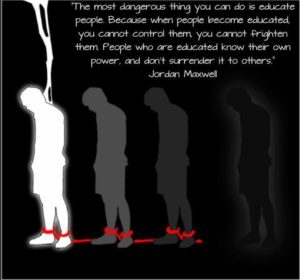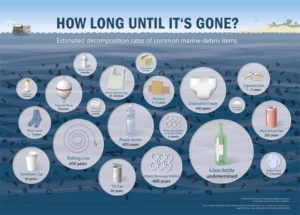Take Risks

What Would You Attempt If You Knew You Could Not Fail?
The Most Dangerous Thing You Can Do Is Educate People
How To Save Your Life – Part 1 – Exit The The Current Nutritional/Medical Paradigm
Paradigm: A typical example or pattern of something; a model.
If what I say here is not yet real for you I urge you to do some homework on the points I make. It will become real soon enough.
From the day your body is born it is injected with vaccinations which contain a variety of toxic materials which suppress the immune system and cause harm yet fail to prevent the disease for which they were formulated.
You attend an education system more concerned with preparing you to become an unthinking, conforming cog in the giant commercial\industrial machine than helping you find your basic purpose in life then educating you on how to create in that direction, how to communicate with your fellows, how to think critically and how to run your body for maximum health and enjoyment.
Because you are not adequately trained in how to run a body you eat because it tastes good, artificially manufactured and toxin laden, calorie rich, nutrient deficient food made from a combination of chemicals added to crops grown on nutrient depleted soil using artificial fertilisers and pesticides by companies far more interested in profit than providing nutrition.
Not knowing and following your basic purpose in life, being in a job not truly aligned to your purpose, the lack of ability to communicate effectively with your fellow man results in losses and failures then other physical and emotional pains result.
This often leads to recreational drug use to mask the pain. Recreational drugs are poisons which reduce the ability of the body to operate optimally.
The poor diet results in malfunctioning, overweight, undernourished bodies that develop a wide variety of symptoms of ill health and disease for which you see a medical professional trained with drug company funds to know all about which drug best suppresses the symptoms of which you complain.
Each drug has an average of 70 adverse side effects (one of which is death) so to suppress the side effects of the first drug you take another until you end up on several drugs which do nothing to address the nutritional deficiencies that most likely caused the body to malfunction in the first place.
Who are the winners and who are the losers in the current paradigm?
First, the winners.
The drug companies make lots of money (think billions) from selling vaccinations at the one end and drugs the rest of the way along the lifespan.
They also manufacture fertilisers and pesticides for farmers and food preserving, flavour enhancing and colouring chemicals for food manufacturers. Now they are adding animal and pesticide genes to food seeds in order to manufacture genetically modified foods to sell to farmers to grow crops that are proven to either kill or cause cancer and sterility in animals to which they are fed.
The food and drug industries are supposed to be overseen by national and international regulatory agencies that are no longer interested in protecting the consumer because they are manned by personnel from big drug companies, agricultural companies and food manufacturers whose mindset is focused on corporate profitability rather than consumer health.
As a result of this your ability to grow yourself and access those items that naturally improve your health therefore threaten their viability – organic food, raw milk, vitamins, herbs and other supplements – is under increasing attack.
The loser is you. You lose the healthy life and happiness to which you were entitled and a ton of time and money.
May I suggest you exit that paradigm and take as many people with you as will listen?
I am doing several things to help you exit that paradigm.
One is posting a lot of health tips in my free weekly newsletter http://www.tlat.net, my blog http://www.tomgrimshaw.com/tomsblog, Google+ and Facebook.
Another is making the healthiest food I possibly can to improve your energy level and deliver a wider range of better nutrients than you have time to compile. More data on that is available at: http://www.healthelicious.com.au/
The third is my book. To know what specific steps to take to successfully exit that destructive paradigm may I suggest you purchase my book on how to live the healthiest life. It is a very comprehensive collection of the best data I have accumulated over the last 4 years of research on many aspects to health – nutrition, lifestyle, exercise and attitude.
So far, nobody who has purchased it has anything but praise for it. So I believe you can purchase it with confidence that you will get something of value from it far greater than the purchase price. But if you don’t, just ask for a refund. I will give it promptly.
Here is the link: http://www.defeatdegenerativedisease.com/
All I ask is that once you get it, you read one page a day. That’s all. Just a page a day. And implement some of the targets I include to make sure you get some value out of it.
The next is providing organic fruit and vegetable boxes to people who live or work in Sydney’s Inner West. Check that out here: http://buy-organic.com.au/
The last may be the one you take up first. If you have any sort of a health issue, call me. I am not a doctor, naturapath, nutritionist, herbalist or hold any formal qualification in any physical healing field. Therefore I cannot charge and do not accept payment for having a chat and passing on some data I have acquired or pointing you to some web site that may help. My pay is the personal satisfaction from helping.
Tom Grimshaw
CEO
Healthelicious Foods
Tel: 02 9552 3311
Email: info@healthelicious.com.au
Seven Dangers To Human Virtue – Ghandi
War is organised murder, nothing else. – Harry Patch, last surviving World War One soldier.

I do not approve it, condone it, support it or engage in it.
Fukushima and Increased Atmospheric Radiation
Earlier this week there was an earthquake off Japan that measured 6.3 on the Richter scale. This newsletter is about why that should be of interest or concern to you.
You see, there are hundreds of spent fuel rods sitting in damaged, above ground housing that could topple in the event of a significant shock. The ensuing release of radiation into the environment has the potential to create a disaster that some experts put at over 100 times worse than Chernobyl.
Last week I was talking about my food bars to a person who sells emergency kits. He was interested in a meal replacement bar. The subject got on to the topic of radiation. He told me he has a device for measuring the level of background radiation. He takes readings daily. Where before Fukushima the average reading was about .008, it was now about .2, peaking at .5!
So the radiation that has been released to date into the environment from the Fukishima disaster is already having a measurable and serious impact. And that is here is Sydney!
Now if you live here in Sydney, like me, you haven’t felt this. So why is it a concern? Radiation exposure results in a cumulative build up in the body of radioactive particles. Like heavy metals (lead, mercury, aluminium), when ingested gradually, these radioactive particles are not large enough to notice immediately but they do have an effect. The effect they have on the body depends on how many particles you are exposed to over how short or long a period of time and what points of weakness exist in your body.
There is an effect scale. If a nuclear blast occurs in front of your face it wipes the body off the map in milliseconds. If it occurs a suburb or two away the body takes a few days to die. Further away and the body suffers for a longer period of time before it packs it in. Often due to cancer. Further away again and fatigue, digestive upsets and disorders, lethargy, depression and so on are less severe but just as debilitating on a body. The principle is, the more radiation the body receives in a shorter period of time, the less it survives.
Fortunately for us, the opposite also holds true. The less radiation the body receives OR THE MORE THE BODY IS ABLE TO GET RID OF RADIOACTIVE PARTICLES, the less damaging effect the radiation has on the survival of the body.
So, the radiation is cumulative and we are already experiencing the effect here in Sydney of Fukushima. This is even though the radiation plume on the computer generated graphics I have seen show nothing coming South, it shows it all going East to the US. I just entered into Google [fukushima radiation plume picture] and of the 16 pictures, the only one that showed what we are experiencing is this one:

)
and there is the high potential for it to get dramatically worse in very short order, what can you do to protect yourself from the effects of past, present and future radiation exposure?
Please consult a medical practitioner to determine the best course of action for you to take with regards to your body. Of course most of them don’t have a clue of how to handle radiation exposure, but if enough people ask, it will be profitable for them to spend the time to learn about it and advise you correctly.
Here is a list of points to take up with your primary health care practitioner or a specialist.
1. Filter fluoride out of your drinking water. Fluoride prevents the body from taking in iodine. Adequate Iodine intake is essential for a healthy thyroid gland. The thyroid is a key player in the immune system of the body.
2. Get your iodine level checked. If deficient, take some iodine in your water. Most people are deficient in it. Per this article (and many others) “In Germany on Wednesday, the Federal Office for Radiation Protection held a news conference that described the threat from the Japanese plume as trifling and said there was no need for people to take iodine tablets. The pills can prevent poisoning from the atmospheric release of iodine-131, a radioactive byproduct of nuclear plants.”
That statement, and the ensuing silence on the subject of increased atmospheric radiation, shows you just how much you can trust the government to protect you (zero) and how much you really do have to rely on your own communication lines and research to stay abreast of the things that truly matter – 100%.
3. Increase your intake of those foods with proven ability to chelate (grab onto and remove, from the Greek for claw) heavy metals and radiation out of the body. Here is a list of some I use in my bars for that purpose: http://www.healthelicious.com.au/ingredients/Detoxification-Ingredients.html
4. Increase your intake of foods high in antioxidants. Antioxidants minimise and help reverse oxidative stress from eating and exercise.
5. Ensure you have sufficient vitamin B3 in your diet or as a supplement. B3 has been proven to help remove toxins and radiation from the body.
6. Cut down your sugar intake. 80% of your immune system is in your gut. Sugar feeds the bad gut bacteria- Candida albicans. If they overwhelm the good guys, all brands of hell ensue.
7. Take a good probiotic, like 2012. They help replenish and feed the good bacteria.
8. Exercise. Moderate exercise increases the production of pathogen fighting T cells in your blood.
I could tell you much more but there is a limit, I am told, on how much others are prepared to read. If you would like more data on the subject or on how to protect yourself and your loved ones from radiation poisoning, contact me.






